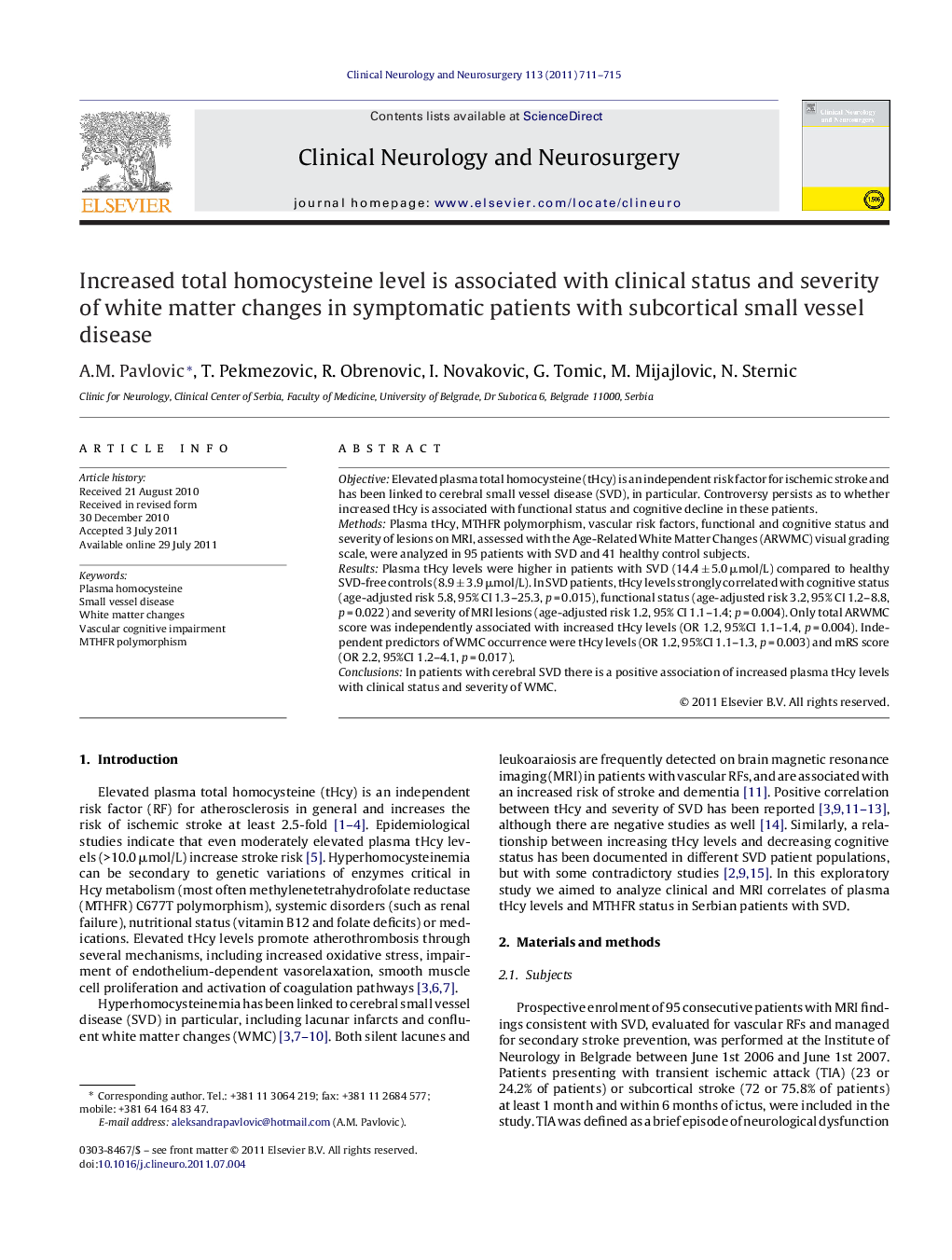| Article ID | Journal | Published Year | Pages | File Type |
|---|---|---|---|---|
| 3040981 | Clinical Neurology and Neurosurgery | 2011 | 5 Pages |
ObjectiveElevated plasma total homocysteine (tHcy) is an independent risk factor for ischemic stroke and has been linked to cerebral small vessel disease (SVD), in particular. Controversy persists as to whether increased tHcy is associated with functional status and cognitive decline in these patients.MethodsPlasma tHcy, MTHFR polymorphism, vascular risk factors, functional and cognitive status and severity of lesions on MRI, assessed with the Age-Related White Matter Changes (ARWMC) visual grading scale, were analyzed in 95 patients with SVD and 41 healthy control subjects.ResultsPlasma tHcy levels were higher in patients with SVD (14.4 ± 5.0 μmol/L) compared to healthy SVD-free controls (8.9 ± 3.9 μmol/L). In SVD patients, tHcy levels strongly correlated with cognitive status (age-adjusted risk 5.8, 95% CI 1.3–25.3, p = 0.015), functional status (age-adjusted risk 3.2, 95% CI 1.2–8.8, p = 0.022) and severity of MRI lesions (age-adjusted risk 1.2, 95% CI 1.1–1.4; p = 0.004). Only total ARWMC score was independently associated with increased tHcy levels (OR 1.2, 95%CI 1.1–1.4, p = 0.004). Independent predictors of WMC occurrence were tHcy levels (OR 1.2, 95%CI 1.1–1.3, p = 0.003) and mRS score (OR 2.2, 95%CI 1.2–4.1, p = 0.017).ConclusionsIn patients with cerebral SVD there is a positive association of increased plasma tHcy levels with clinical status and severity of WMC.
